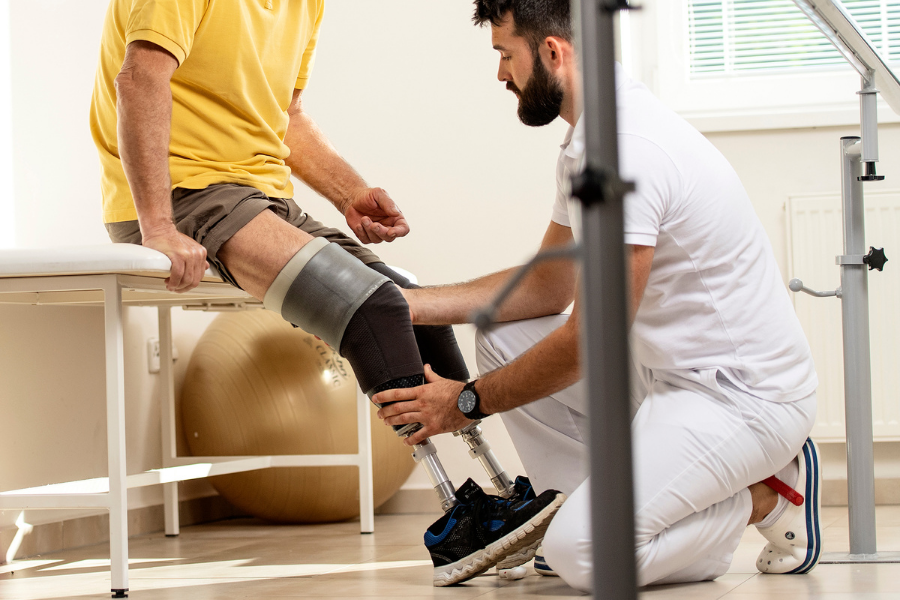How well your prosthesis functions, depends on a combination of various factors. But for most people, there are three things that are most important: the fit of the socket, the alignment of the prosthesis and their physical and mental well-being.
Naturally, your O&P professional can help you make the right choices concerning your prosthesis. All the same, it can’t hurt to learn more about prostheses, so that you can help ensure the best fit of your artificial limb.

Fit of the socket
Your socket connects your residual limb to your prosthesis, so it is extremely important that your socket fits perfectly. A good fit helps to distribute the pressure on your residual limb and minimise the impact of your movements. After all, much pressure is applied to your socket during movement.
Your O&P professional creates a custom socket that fits the shape of your residual limb. In doing so, there are a wide variety of shapes and materials that can be used. Which ones your O&P professional chooses depends on, among other things, your lifestyle and physical condition.
The advantages of a good socket fit include:
- Reduced irritation due to limited movement of your residual limb in the socket, enhanced comfort and better health of the skin of your residual limb;
- Good control of your prosthesis.
The volume of your residual limb changes during the day, in turn changing the fit of your socket. So, talk to your O&P professional about, for example, different sockets and different possibilities to connect your residual limb and prosthesis.
Alignment
The alignment of your prosthesis refers to the relationship between the various components. With a prosthesis, there is not a simple vertical line. The alignment of your prosthesis depends on, among other things:
- The various components of your prosthesis and their functioning;
- The length of your residual limb and amputation level;
- Your posture and size;
- The degree to which you can control the prosthesis.
Your O&P professional bases the alignment of your prosthesis on your feedback and his or her own experience. The advantages of proper alignment include greater control, more stability, enhanced comfort and a better functioning of your prosthesis.
Physical and mental well-being
To be sure that you get the prosthesis that is best for you, your O&P professional will ask questions about your daily life. What kinds of activities do you enjoy? Do you work or are you planning to return to work in the future? What kinds of challenges do you experience at home, outside and at work? Your O&P professional will also examine your physical condition, such as muscle strength, endurance and balance. These will be considered in light of your current situation, as well as future prospects.
Once you start using your prosthesis, you will learn during therapy or the rehabilitation process all there is to know about its use. This process is important regardless of whether you have worn a prosthesis in the past. After all, your skills or the technology in the prosthesis may have changed. So, it is always important to take the time to learn how your prosthesis works and how you can get the most out of it for a more independent and active life.